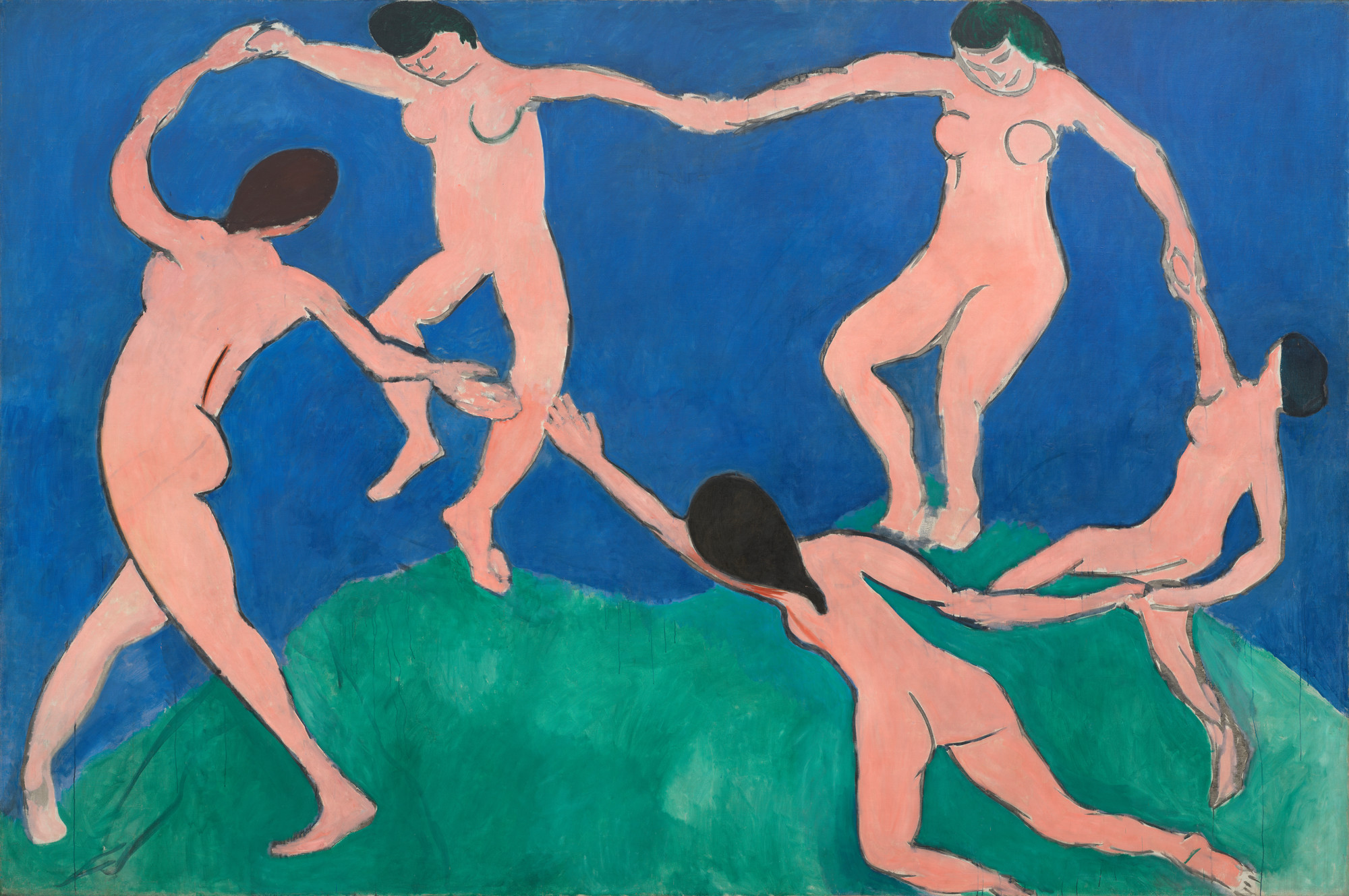The Henri Matisse paintings known as “The Dance” often remind me of the nature of things—and that includes the U.S. oil and gas industry.
Although it isn’t discussed in viewer critiques, which focus on color and form, what is apparent is the fragility of relationships—equity and debt markets, social, supply chains and more, including energy.
In each of the two paintings (1909 and 1910), five figures are in clockwise motion, holding hands, on a pedestal rendered as a green lawn on the edge of what can be construed as a blue abyss.

Less noticed is that the two positioned at the abyss’ edge at that moment are looking down with angst at their feet in this precarious position.
Firmly on land, the one on their left appears to be pulling with all of her might, understanding the implications of failing and having herself successfully relied on the one to her own left in getting her past this potential doom.
It’s her job at this moment.
But that individual to her left is now slipping on the grass. There is a visible gap in that one’s grasp of the hand of the individual on her own left and who is on the cusp of entering the edge of the abyss.
While momentum had resulted in successful execution of this circle dance up until this point, the imminent interruption in this momentum is now certain to result in collapse.
At once, tension kept the pillars upright, all on equal footing and each supporting another.
Disruption of that parity will mean they all fall down.
And they are falling down.
Had there been a subsequent frame, three of the five would be in lock-chain, dangling in the abyss and only one individual would still be standing on the pedestal, singly trying to bring the others back up.
The image is representative of multi-pillar, interlocking dependencies—such as the U.S.’ need for a healthy oil and gas industry—that make this continued American democracy work.
Trusted financial markets are key, too, as well as the rule of law.
Another is hopefulness—the most overlooked attribute of sustainable democracies, economies, interpersonal relationships and, well, everything.
It’s a vicious cycle, in a way, to repeat this trial again and again in a circular motion, knowing the odds are against success in perpetuity.
Yet hopeful Americans hold tight, crawl back up and, starting with the one pair of legs still standing, help pull it all back together.
And they resume The Dance. Slowly at first and then again at vortex speed.
Today, there are weak links in the renewed, strong “America is long, not short, energy” pillar.
Sadly, it’s from within: Federal policies, machinations and other means of foiling oil and gas free enterprise are septic.
Federal policy is the dancer in mid-slip. The abyss is representative of the bad actors worldwide dreaming of collapsing the U.S.—this ever-forward, ever-stronger, ever-optimistic Whoville.
One of these bad actors happens to own the other of the two “The Dance” paintings. Made in 1910 and having dancers in terracotta tone, the 1910 version is in Russia’s The Hermitage Museum.
The 1909 one is in the Museum of Modern Art (MOMA) in New York. In this one, the link still standing is the nation’s founding principles: reason, rule of law, property rights, human rights, freedom of trade and other noble pursuits.
But the U.S. has been turning its back on the very industry that makes everything in America—the world, really—possible: Oil and gas.
Take LNG, for example. In a move to vote-bait the energy illiterate—a frustratingly large portion of the U.S. demographic—the Biden administration paused issuance of new LNG export project permits. And now, an unwitting federal judge in Washington, D.C., was persuaded by the Sierra Club into thinking some past-approved permits were illegitimately issued.
Another is disruption by the Federal Trade Commission (FTC) in the normal course of energy M&A.
Ironically, the 1909 version of “The Dance” has one degree of separation to the FTC, the federal government as a whole, and oil and gas itself.
Or possibly “amusingly” is the correct word.
It was donated to MOMA by Nelson Rockefeller.
He was an heir of the country’s first integrated oil company, Standard Oil, that was famously broken up in the early 20th century for violation of federal anti-trust rules.
And he was vice president of the United States, serving in the mid-1970s when the U.S. was infamously caught both oil-short and gas-short by OPEC and other unfriendlies of that era.
And Rockefeller had purchased the 1909 “The Dance” in 1963 from an heir of Walter Chrysler, founder of Chrysler Corp.
In the painting, Earth is blue and green.
Recommended Reading
E&P Highlights: March 31, 2025
2025-03-31 - Here’s a roundup of the latest E&P headlines, from a big CNOOC discovery in the South China Sea to Shell’s development offshore Brazil.
EOG Ramps Gassy Dorado, Oily Utica, Slows Delaware, Eagle Ford D&C
2025-03-16 - EOG Resources will scale back on Delaware Basin and Eagle Ford drilling and completions in 2025.
E&P Highlights: March 10, 2025
2025-03-10 - Here’s a roundup of the latest E&P headlines, from a new discovery by Equinor to several new technology announcements.
Ring May Drill—or Sell—Barnett, Devonian Assets in Eastern Permian
2025-03-07 - Ring Energy could look to drill—or sell—Barnett and Devonian horizontal locations on the eastern side of the Permian’s Central Basin Platform. Major E&Ps are testing and tinkering on Barnett well designs nearby.
Expand Lands 5.6-Miler in Appalachia in Five Days With One Bit Run
2025-03-11 - Expand Energy reported its Shannon Fields OHI #3H in northern West Virginia was drilled with just one bit run in some 30,000 ft.
Comments
Add new comment
This conversation is moderated according to Hart Energy community rules. Please read the rules before joining the discussion. If you’re experiencing any technical problems, please contact our customer care team.






